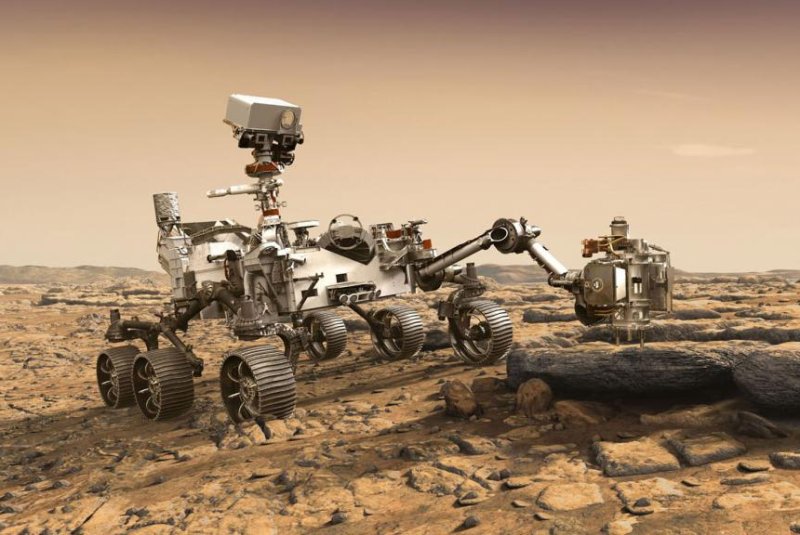An artistic rendering showcases the NASA's Mars 2020 rover. Photo by NASA/JPL
Nov. 28 (UPI) -- NASA's Curiosity rover has been a tremendous success, providing scientists streams of valuable data. But there's always room for improvement, and NASA engineers expect the next rover to improve on Curiosity's technological legacy.
At present iteration, the Mars 2020 rover features greater autonomy, seven new instruments and updated wheels.
Despite design improvements, the new rover looks a lot like the old rover. And that's because the Mars 2020 rover utilizes much of the same hardware. In fact, so-called "legacy hardware" accounts for 85 percent of the mass of the new six-legged craft.
"The fact that so much of the hardware has already been designed -- or even already exists -- is a major advantage for this mission," Jim Watzin, director of NASA's Mars Exploration Program, said in a news update published by NASA's Jet Propulsion Laboratory. "It saves us money, time and most of all, reduces risk."
The slate of new instruments added to Mars 2020 will help the rover explore Martian terrain that once hosted lakes and rivers, regions that may have once hosted life.
A new radar system accounts for one of the seven new instruments. It will produce images of rock and ice layers as deep as 30 feet beneath the Martian surface. A new laser will be tasked almost exclusively with hunting for carbon atoms.
The new rover's inherited Curiosity hardware will also receive some updates, including an improved color camera and a more powerful zoom lens. A new laser will allow the rover to vaporize rock samples for chemical analysis.
"Our next instruments will build on the success of MSL, which was a proving ground for new technology," said George Tahu, NASA's Mars 2020 program executive. "These will gather science data in ways that weren't possible before."
In addition to hunting for signs of ancient life, the rover will also test CO2 and oxygen-producing technologies that could be used on future manned missions to Mars.
The new rover will also be outfitted with improved landing technology. During descent, the rover's software will compare real-time images of the Martian surface with preloaded images of its landing targets to determine whether to adjust course and when to deploy its parachute.
"Terrain-relative navigation enables us to go to sites that were ruled too risky for Curiosity to explore," said Al Chen of JPL, the Mars 202 entry, descent and landing lead. "The range trigger lets us land closer to areas of scientific interest, shaving miles -- potentially as much as a year -- off a rover's journey."
The multiple stages of the Mars 2020 are currently under construction at JPL's Spacecraft Assembly Facility in Pasadena, Calif. A cruise stage will be responsible for flying the rover through space, while a descent stage will be tasked with delivering the rover to the Martian surface.















